At the start of the year 10 neo-pros were mentioned as worth following. Time to examine how the predictions fared and more importantly to see how the riders got on this year and what might come next?
Caleb Ewan continues to match all the hopes placed in him and glides along a steady career path. Still just 21 years old he’s been raced sparingly this year, 57 days in total, a deliberate choice rather than illness or injury. This care has included just three World Tour races and he even skipped the Tour Down Under despite his obvious suitability. Even with lightweight calendar he’s taken 10 wins including the Vuelta Stage pictured above. With John Degenkolb and Peter Sagan left trailing you’d understand if Ewan’s got this as his desktop background. It’s been a productive year and better still sign that he’s part of a development program with no rush to rely on him for results. Things change on the team with Ewan and Michael Matthews set to become the established sprinters with the Yates brothers and Esteban Chaves leading on the hillier days and Robert Power joining for 2016. It makes Orica-Greenedge look like an orchid nursery as they try to develop rare and delicate talents, a far cry from the Team Bogan public image.
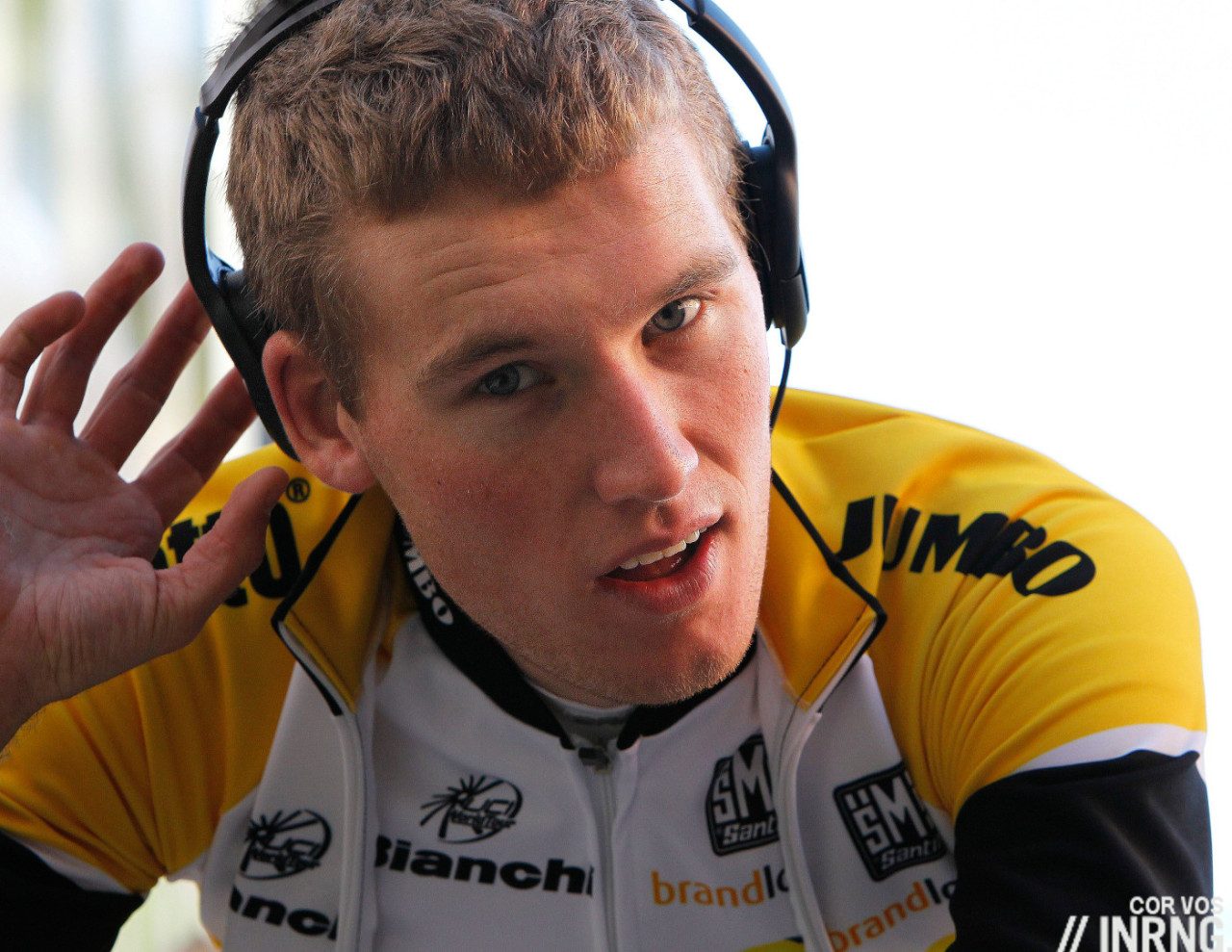
Some milliseconds can last a lifetime. Mike Teunissen won the Tour de l’Ain prologue ahead of FDJ’s Alex Geniez by six hundredths of a second, the Frenchman went onto win the race overall while Teunissen is now part of the select club of neo-pros to win a race during their first year as a pro. It was his best result in a year where he finished the Vuelta and took second place in the Ride London Surrey Classic too. So a solid season but not barnstorming and let’s hope after a long season he’s enjoyed a good rest. He’s also going to be one of the last in the line for the Rabo development programme with the Dutch bank having announced it will pull back further from cycling sponsorship, the end of an era.
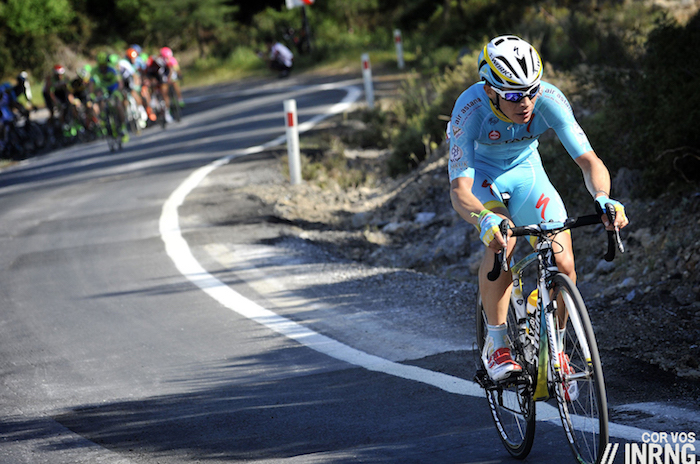
It was one of the oddest signings from 2014. Miguel Angel López opted for Astana which has no record of developing young riders and few Spanish speakers too. He’d just won the Tour de l’Avenir and this looked like the Kazakh team making him an offer too good to refuse. Lopez is one of the rare riders to make a name for himself before to turning pro thanks to the “Superman” nickname derived after he fought off bicycle thieves despite being stabbed in the leg. He does vibe hardcase on the bike, a compact ball of muscle rather than the usual slim build, picture a Pit Bull Terrier rather than underfed mountain goat. He’s had a slender year in terms of racing but made up for it with the Vuelta a Burgos where he won the mountain stage summit finish ahead of veteran Dani Moreno although this pre-Vuelta a España tune-up had a very light attendance with just 88 riders and several make-weight teams padding out the peloton. He was second in the Tour of Turkey’s summit finish at Selçuk and could have done better had he timed and measured his efforts better but arguably his best result this year was seventh overall in the Tour de Suisse, built on fourth place in the Queen Stage to the Rettenbachgletscher above Sölden.
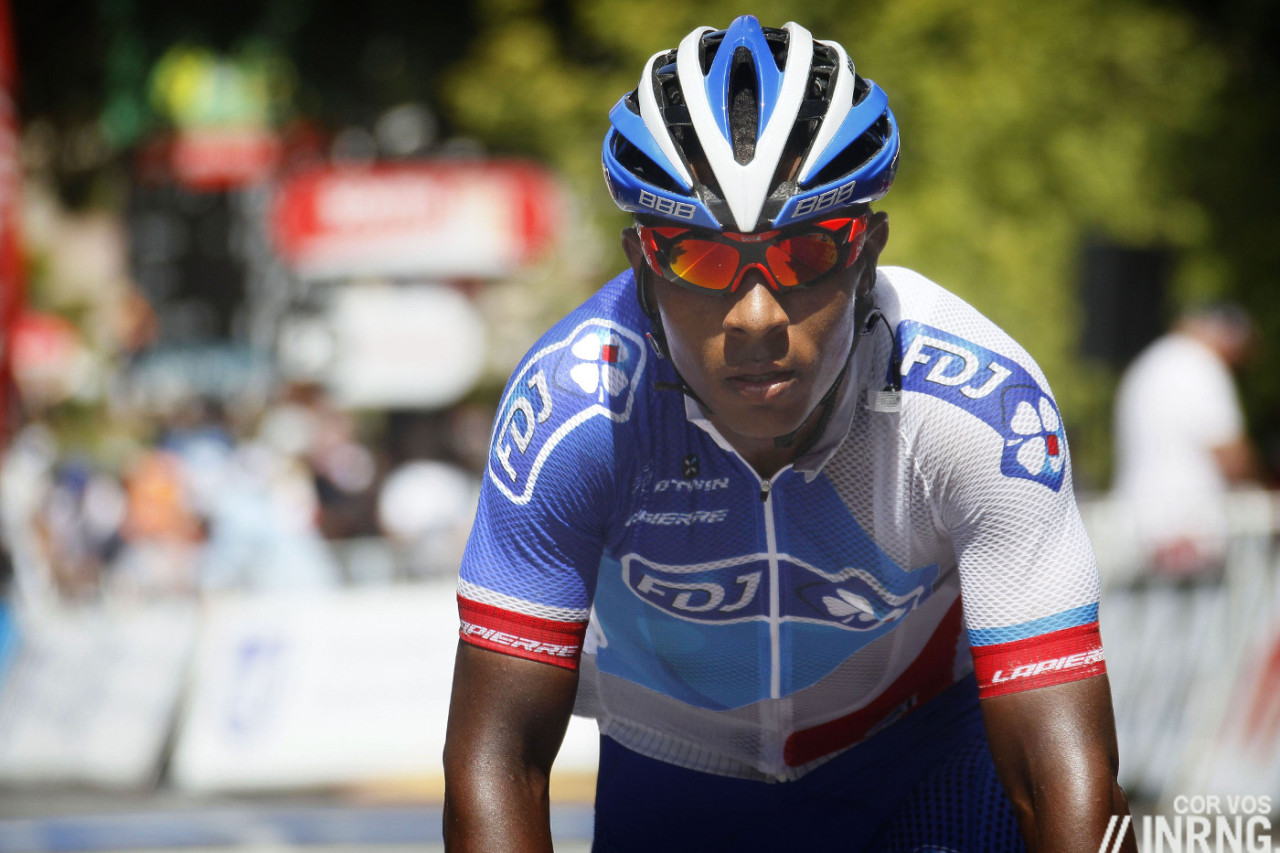
Lorrenzo Manzin is the first professional cyclist from Réunion Island in the Indian Ocean which makes him a more curious prospect that fellow FDJ neo-pro and sprinter Marc Sarreau. But he’s not the exotic choice, word is that he’s faster than Sarreau although he’s not had too many chances to prove it, take the Tour Down Under where he had a big crash early on. Still he won the Roue Tourangelle this year and remains a rider to watch, 2016 should see him start to pick off more races on the French calendar.
Neo-pro defined
“Any rider who joins a UCI ProTeam or Professional Continental Team for the first time no later than during his twenty-fifth year.”– Article 7 of the CPA-AIGCP joint agreement, uci.ch
So this includes riders who were pros with Continental teams before moving up. A neo-pro can be 26 years old too. Now onto the neo-pros in their second year…

Imagine you’re a neo-pro who finishes second in Liège-Bastogne-Liège, one of the hardest one day races going: you’d be tempted to pump the air with pride. Not Julian Alaphilippe who offered a theatrical demonstration of bar bashing as he lost out to Alejandro Valverde… again after the Spaniard had trumped him in the Flèche Wallonne days before. This was the highpoint of a run that went from the Volta a Catalunya in March (two top-5 places), the Tour de Romandie in May (three top-5s) and the Tour of California where he took a stage win and finished second overall to Peter Sagan. Before gastric woes got the better of him he was slated to rival Sagan in the Worlds which sounds fanciful but if he can match Valverde in the Ardennes then why not? The real question is where does this versatility lead? Leadership is probably the next step, he’s been able to sit the shadow of Michał Kwiatkowski and Mark Cavendish this year before deploying his punchy finish and carrying such a heavyweight team will be something else.
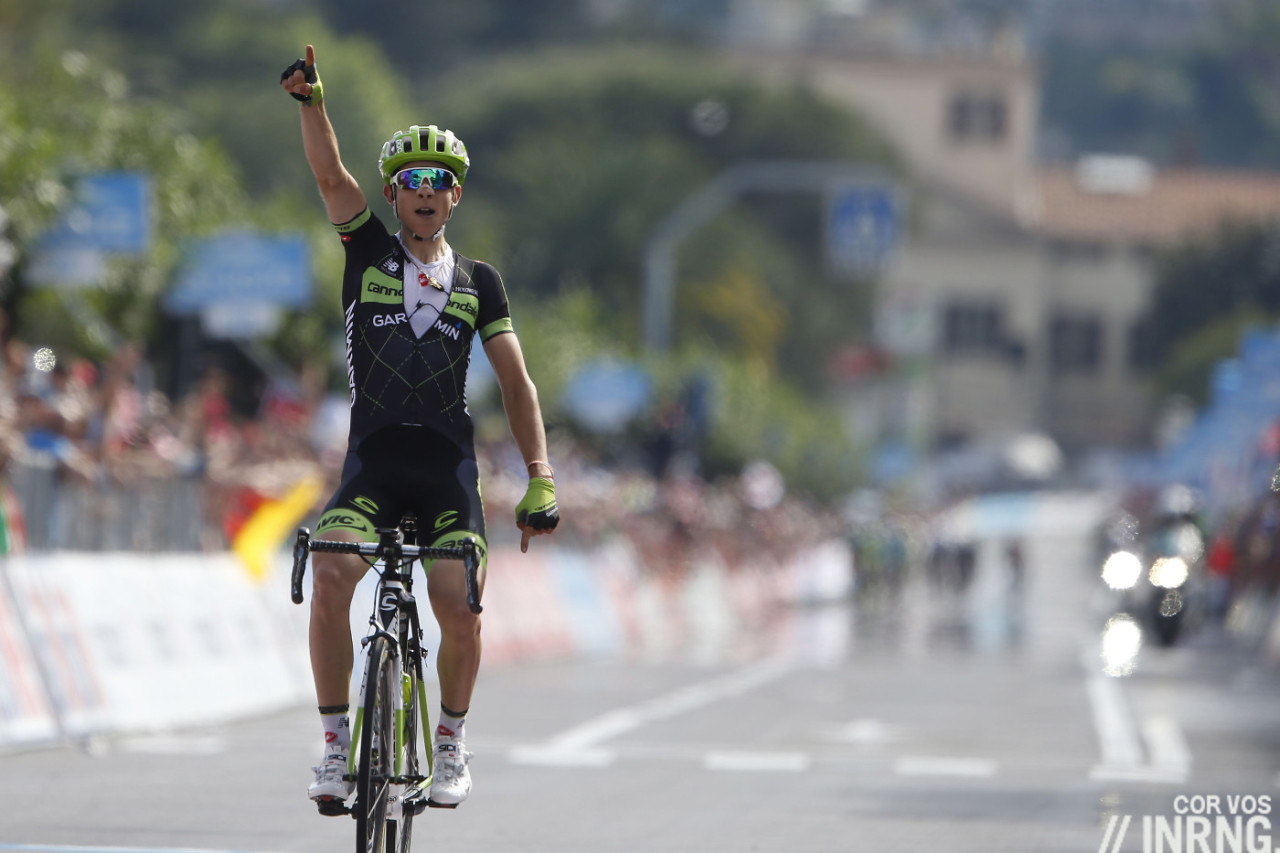
Davide Formolo was the first rider named and in his season’s been defined by his Giro d’Italia stage win in La Spezia, one of Cannondale-Garmin’s rare high profile wins. Elsewhere he’s been a regular contender for best young rider competitions and among the big boys he placed tenth overall in the Tour of Poland. The Italian has progressed but as the photo shows he still needs to remember to zip up his jersey when the finish line approaches.
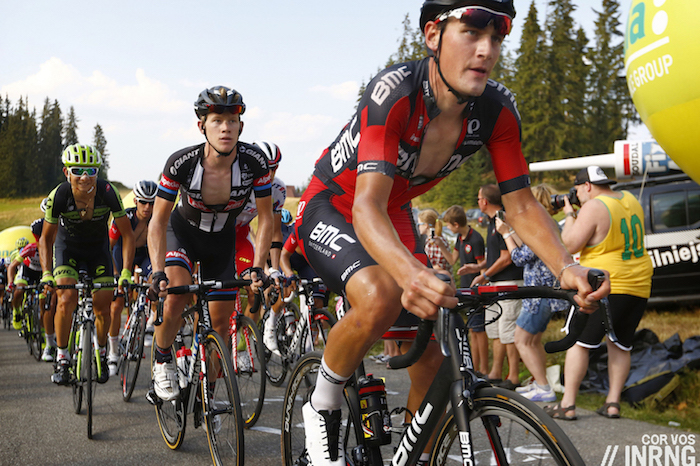
BMC Racing might race under a US flag but there’s no doubting their Swiss heritage as they continue to produce Swiss talent via their development team. Silvan Dillier got the tip after impressing in 2014 although 2015 saw him overshadowed by the towering force of Stefan Küng although the pair are team mates at BMC and also on the Swiss team pursuit on the track where Dillier has spent some time. On the road he’s won his second world champion title in the team time trial event and took the Swiss national TT title too plus a stage in the Arctic Race of Norway where he was second overall. He’s a powerful rider who should be more visible in the classics next year.
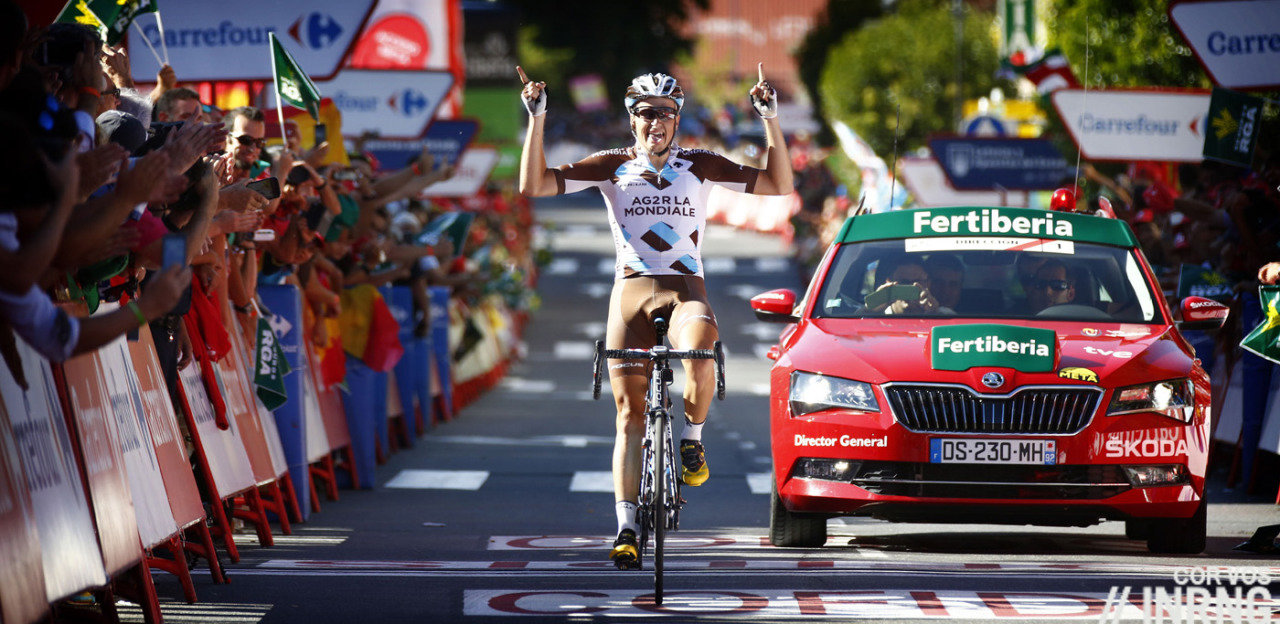
Alexis Gougeard went into 2015 with question marks over him. He’d impressed in his first year where he took several wins but did his rivals let him slip away thinking the hefty neo-pro wouldn’t last long only to discover he’s almost impossible to bring back? This year was all about confirmation and he’s making a name for himself as a breakaway specialist, a modern version of Jacky Durand but with one big difference: he wins regularly. That’s him winning a stage of the Vuelta above and, as if to prove lapping Spain didn’t tire him, he took the Tour de l’Eurométropole overall after powering to win the prologue. He had a strong spring classics campaign, notably in Paris-Roubaix where he went in the morning breakaway and when the group was caught he just attacked again and went in the next move. Speaking to L’Equipe his old coach Jackie Tiphaigne said “Gougou” just needs a a five metre lead for him to consider he’s in a breakaway. All that remains to be seen his prowess in the high mountains and whether that bulk can be slimmed down although there’s no rush for Ag2r La Mondiale given Romain Bardet and Pierre Latour can occupy these roles.
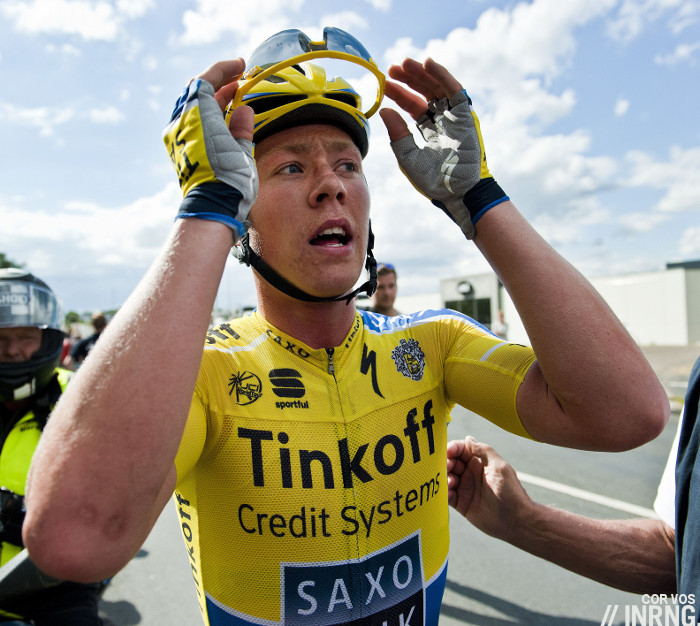
After impressive results in 2014 Dane Michael Valgren was tipped for the Ardennes classics this year only to offer two DNFs. Arguably his results this year have been worse than before but he’s had progress in other ways, for example making Tinkoff-Saxo’s Tour de France team all while being a Dane on the receiving end of the Oleg Tinkov’s rants against Bjarne Riis and Denmark.
Magnus Cort is another rider who hasn’t continued in 2015 as he did in 2014. Arguably his 2014 season saw a World Tour quality rider racing in smaller events, the classic tale of the big fish in a small pond as he racked up enough wins to finish in between Mark Cavendish and John Degenkolb on the victory rankings. 2015 hasn’t brought a single win, it hasn’t been a disaster with many third and fourth places and he’s still 22. Looking ahead if anything his problem is internal to Orica-Greenedge, he sprints well from a small group on hilly days but so does Michael Matthews although this can be easily resolved by calendar planning and cooperation.
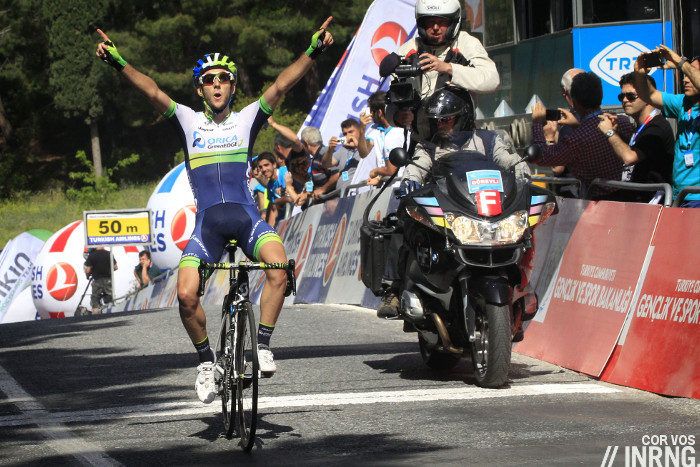
Finally there’s Adam Yates. As stated at the start of the year he was almost too obvious a pick yet he was impossible to ignore. He won the Clasica San Sebastian although he had to be convinced of this by an Orica-Greendge soigneur waiting after the finish line, if he missed the finish line celebrations at least he got to enjoy the podium protocol. Both brother made it to Paris for the Tour de France and Simon had a great year too with results like fifth overall in the Tour of the Basque Country and the Dauphiné, sixth in the Tour de Romandie, all while 22 years old.

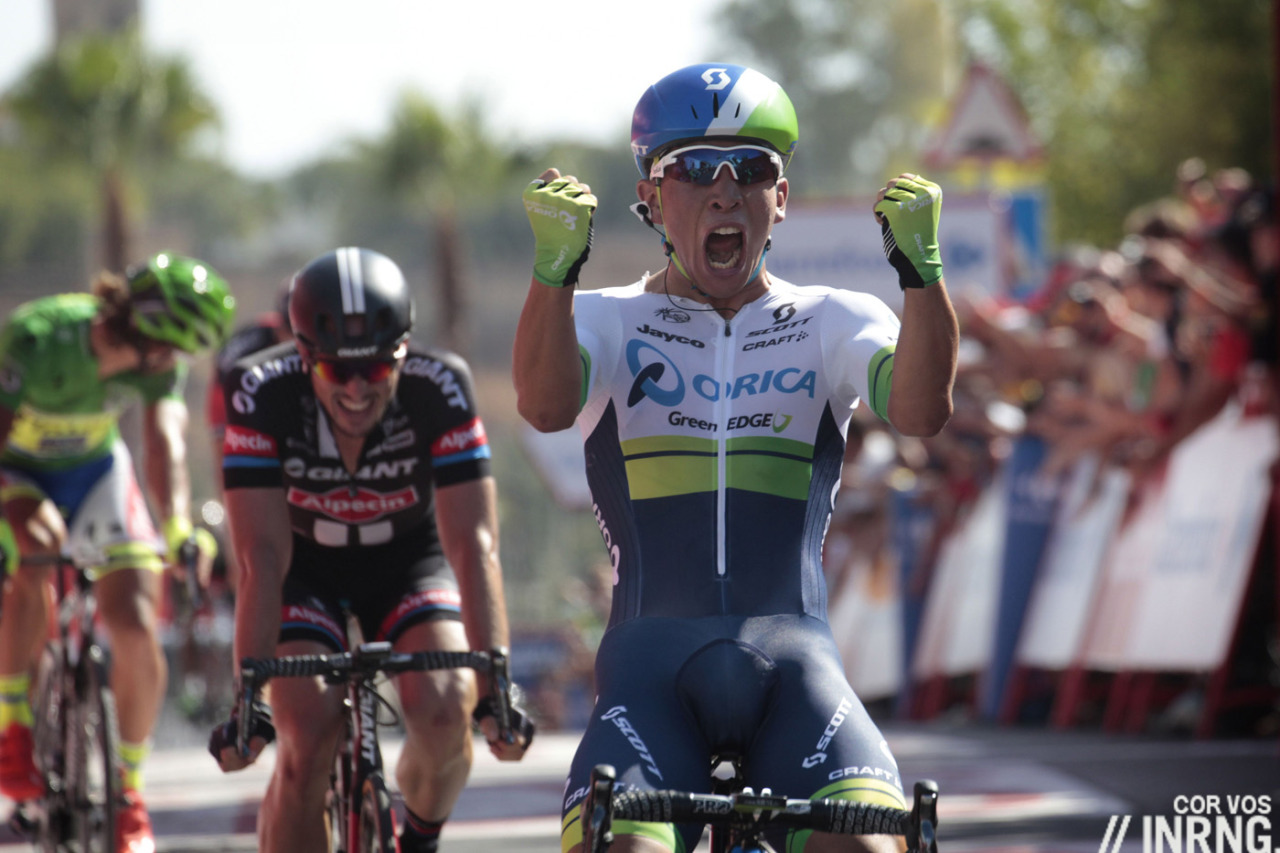
If I was a young rider I’d definitely opt for Greenedge if I had a choice. They seem to take care of the riders by limiting race days, but also provide great opportunities to lead at a young age. No idea why they still can’t get a second sponsor.
Or worse, their primary sponsor’s what…a mining explosives company? How many pro cycling viewers are interested in this product? But it’s still a case of who wants to sponsor a cycling team that can blow up (no pun intended) in your face with another doping scandal?
How many pro cycling viewers are interested in purchasing the bulk rolled steel that Lampre produces? How many fans use the products of high end investment banks like Tinkoff Credit Systems or Saxo Bank? Yeah, so Orica probably wanted some good PR, and good on them for it.
not sure Tinkoff or Saxo are high-end investment banks… credit card operator and fx broker would be more like it. You’re probably still correct that not many cycling fans use their products tho.
Yes, it comes across that way. Certainly for English-speaking neo pro’s.
There’s some heartening stories in this group, and I wish them all continued success in the future.
The other side of the coin is the story of Campbell Flakemore, a promising Aussie neo pro with BMC, who looks like he’s heading back home after being unable to settle, citing language difficulties as a prominent reason.
I wonder if he could pick up the pieces with Orica, although reading some of his quotes it seems as if he’s taking a break away from pro cycling?
I don’t know Flakemore, but maybe he should move to Colorado.
This Cyclingtips article makes pretty clear Flakemore is quitting pro cycling. Of course, he’s still young enough, and almost certainly talented enough, that if he changes his mind he’d likely get a shot.
It seems fun too with them, a good journey.
Team Bogan is a little harsh for OGE. Come to Oz and if you look around enough you’ll see some bona fide bogans (just don’t get too close).
Yeah, I think an Aussie would refer to them as being “Occer” (or “Ocker”) rather than Bogan. Bogan holds negative connotations in Aus.
My view about OGE it is a nice team because the waythey care with young guys and work as a team, but I’m really interested to know what happened with them and Santaromita.
I suspect the story regarding Orica and Santaromita is more boring than anything – he probably never really got a strong foothold in the team so they didn’t extend with him.
OGE’s a great team – from the outside it appears they have the best atmosphere and the guys really work hard for each other.
The Küng-hype in Swiss is big (I saw that a swiss newspaper foolishly decided to call him “King Küng”, of course without any consideration what this “wordplay” could do to our poor brains reading and imagining it!). But he deserves the attention and the love, although there also comes some pressure with it. Can’t wait for him, Gougeard and Formolo to grow up.
Interesting how Orica-GE feature so much, what makes them so good at development?
We don’t yet know if they’re good at development, Esteban Chaves is coming on nicely and Michael Matthews keeps getting better but it’s a difficult and thankless task, take young riders and once they’re any good Sky or someone will sign them with a deal OGE can’t afford to match. It is interesting that this team have a focus like this but they’re not alone, see Giant-Alpecin for another example.
What’s particularly impressive in Orica’s case is that they’ve built a talent pool of young riders across the disciplines – they’ve got up-and-coming sprinters, puncheurs, one-dayers, climbers, stage racers and TT’ers.
There must be a healthy competition level in the team but they’ve maintained a positive team spirit, as Inner Ring points out.
Hell, they’ll even give you a wheel if you puncture!
All-round good guys.
If I was young and talented I would dream of signing up with Orica-GE rather than any other team. OK I confess, money is not everything for me, I would rather work for less to be part of team with an atmosphere I like, than a team of robo-cyclists.
P.S. Can it be a coincidence that I often like to wear an Orica jersey?
The development/transition/maturing of Orica and Giant from GT-stage and classics hunters to GC focused teams is *the* story/narrative for 2016 IMO.
Really interested to see how they get on…
The OGE love in is all well and good but the ‘disagreement’ between their two big leaders (Matthews and Gerrans) at the World Championships in Richmond suggests to me that the team suffers from many of the same underlying tensions as others.
really looking fwd to seeing if Benoot can back up his Classics rides from last year…
Julian Alaphillipe is going to be the new tom boonen. Not the exact same type of rider, but he’s got a huge potential to be a mega star. Crazy amount of confidence. For a kid his age to race like he did and get mad that he came second only shows that he expected to win and believed the win was his… like Inrng pointed out – many kids his age would have been star-struck, others would have been quietly ecstatic at their position, but it takes a special kid to be that mad at coming second.
Küng is a future hour record holder.
“…Astana which has no record of developing young riders…”
Aru?
You’re right there but he’s one of the few neo-pros they’ve taken on, perhaps the exception to prove the rule? It doesn’t seem to be part of a policy, they take on Kazakhs and tend to buy in the foreign talent when it’s established, think Nibali, Guardini, Fuglsang, Boom etc.
@MattF I put that down to poor planning and team direction. Of course they both want to win (and were capable of it) although an initial plan of ‘two leaders’ makes sense – there should have been defined roles for what would happen if they both got into the finale – having them sprinting against one another was just ridiculous. For mine if Gerrans had buried himself to chase Sagan Matthews could be world champion now.